Abstract
We examined the effectiveness of using dolls to teach young children with tracheostomies to self-administer a suctioning procedure. Four children between the ages of 5 and 8 years, who had had tracheostomies for 6 months or longer, participated. After skills were taught via doll-centered simulations, in vivo skills were evaluated. All of the training and probe sessions were conducted in the participants' classrooms or homes. Results of a multiple baseline design across subjects and skill components indicated that the performance of all children improved as a function of training. Skill maintenance was demonstrated by all participants during follow-up assessments conducted 2 to 6 weeks posttraining. Results of a questionnaire completed by caregivers and interviews with the children revealed high levels of satisfaction with the training procedures and outcomes.
Full text
PDF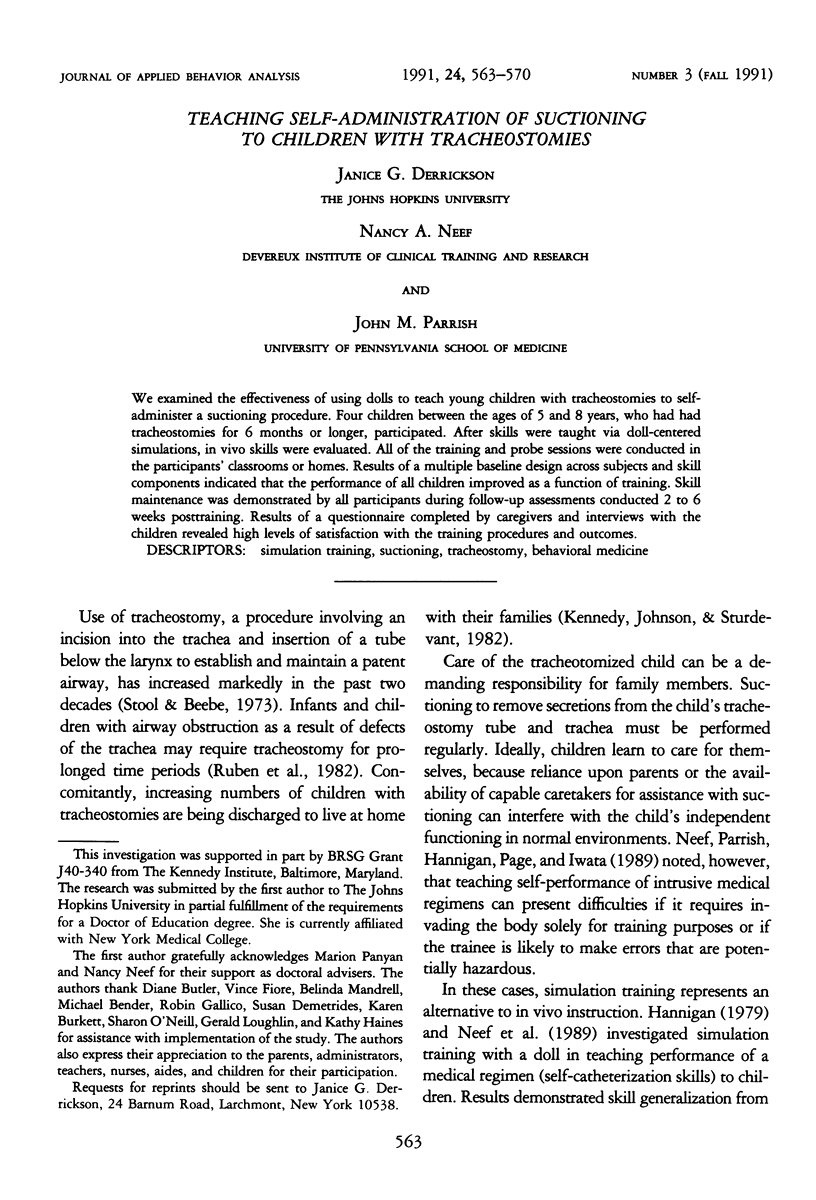
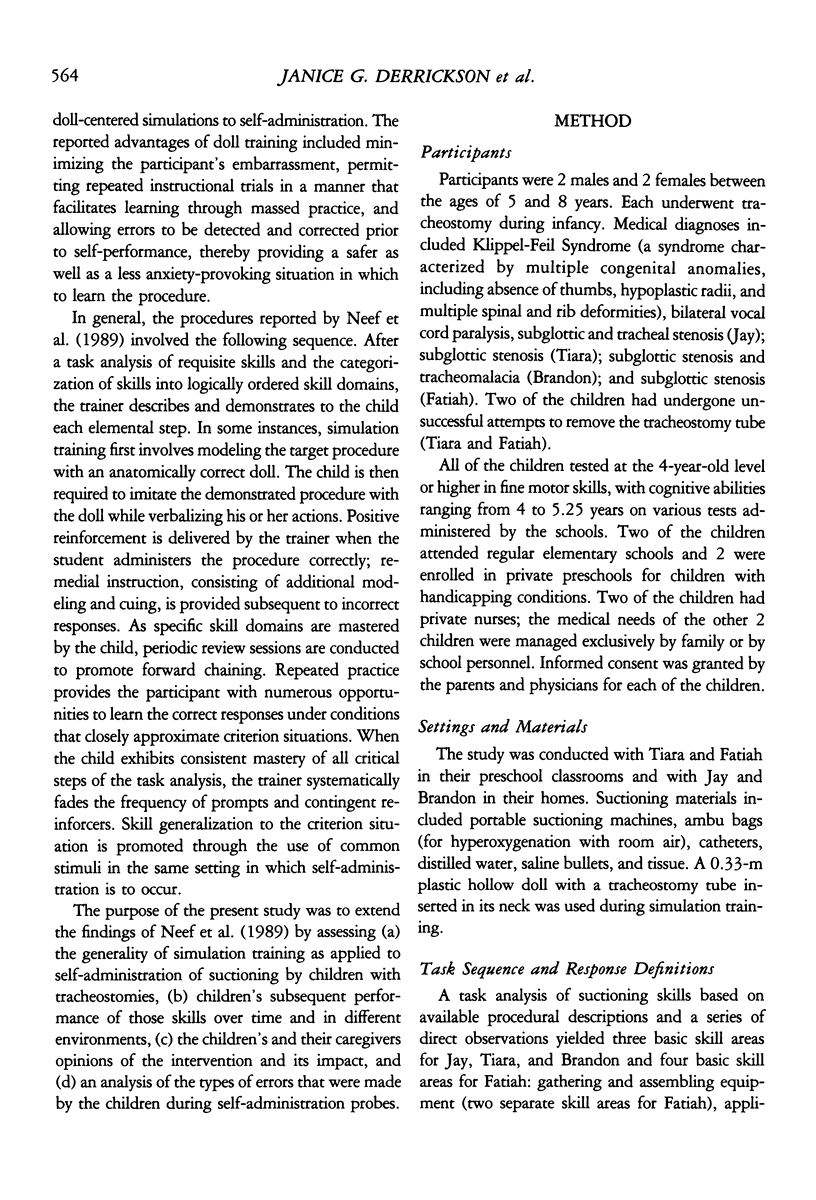
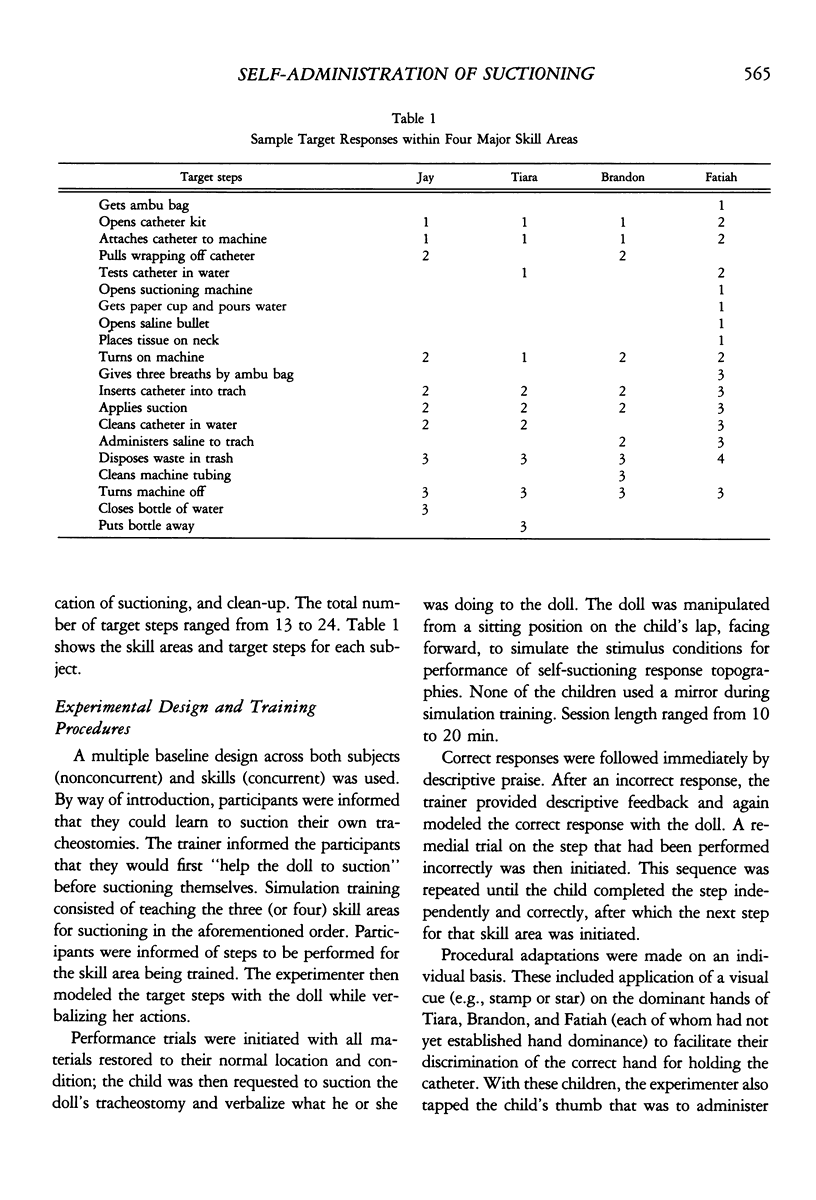
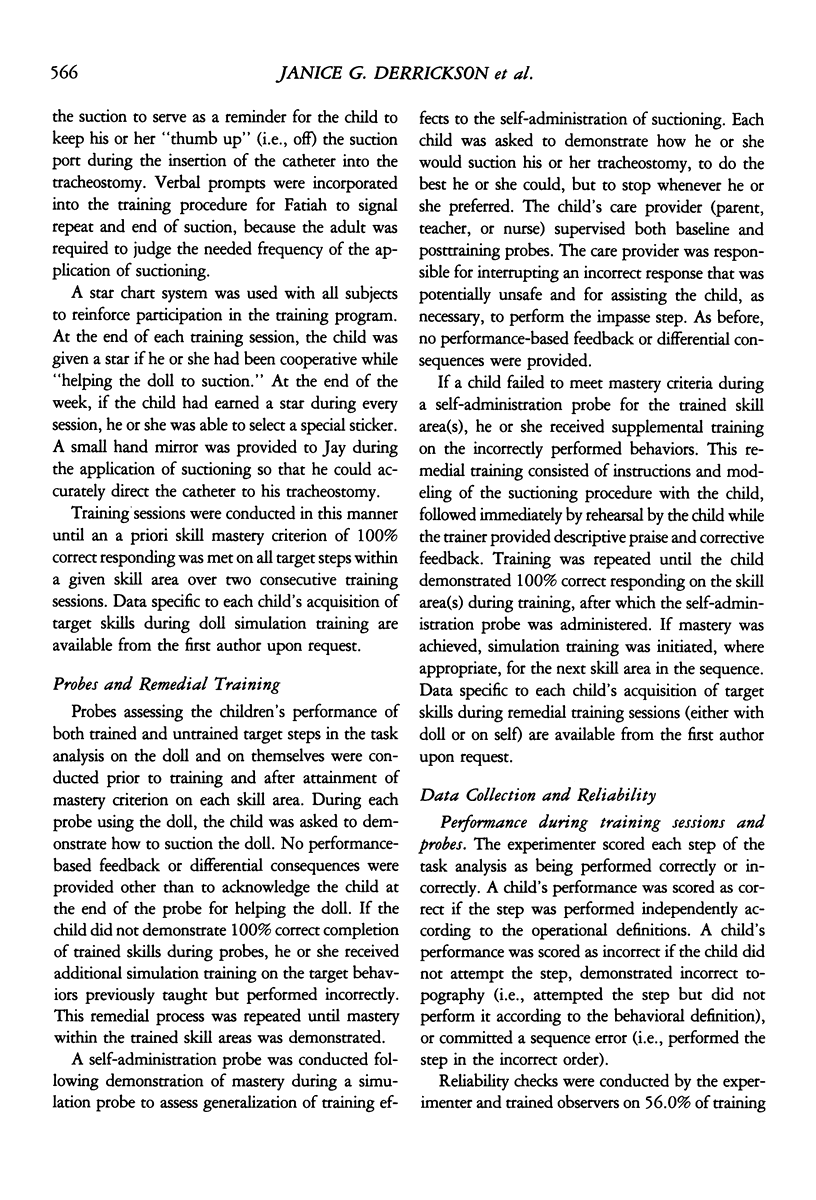
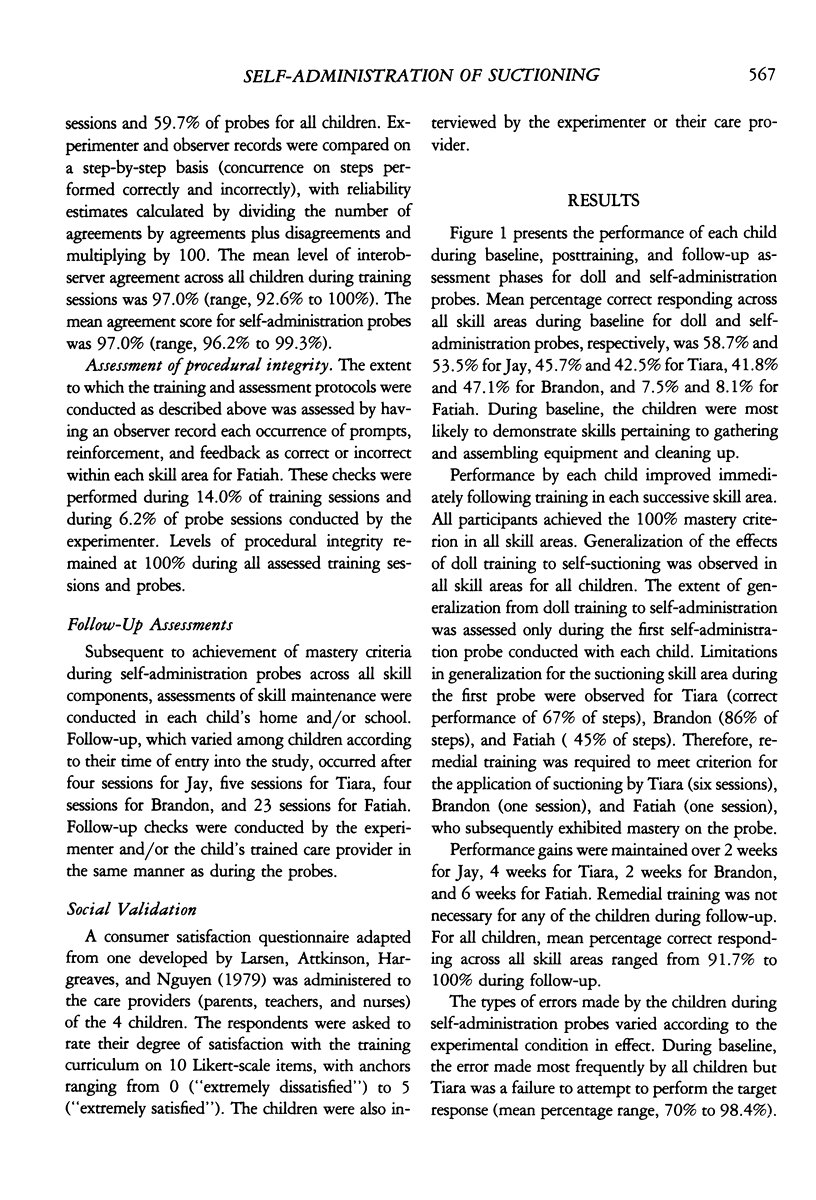
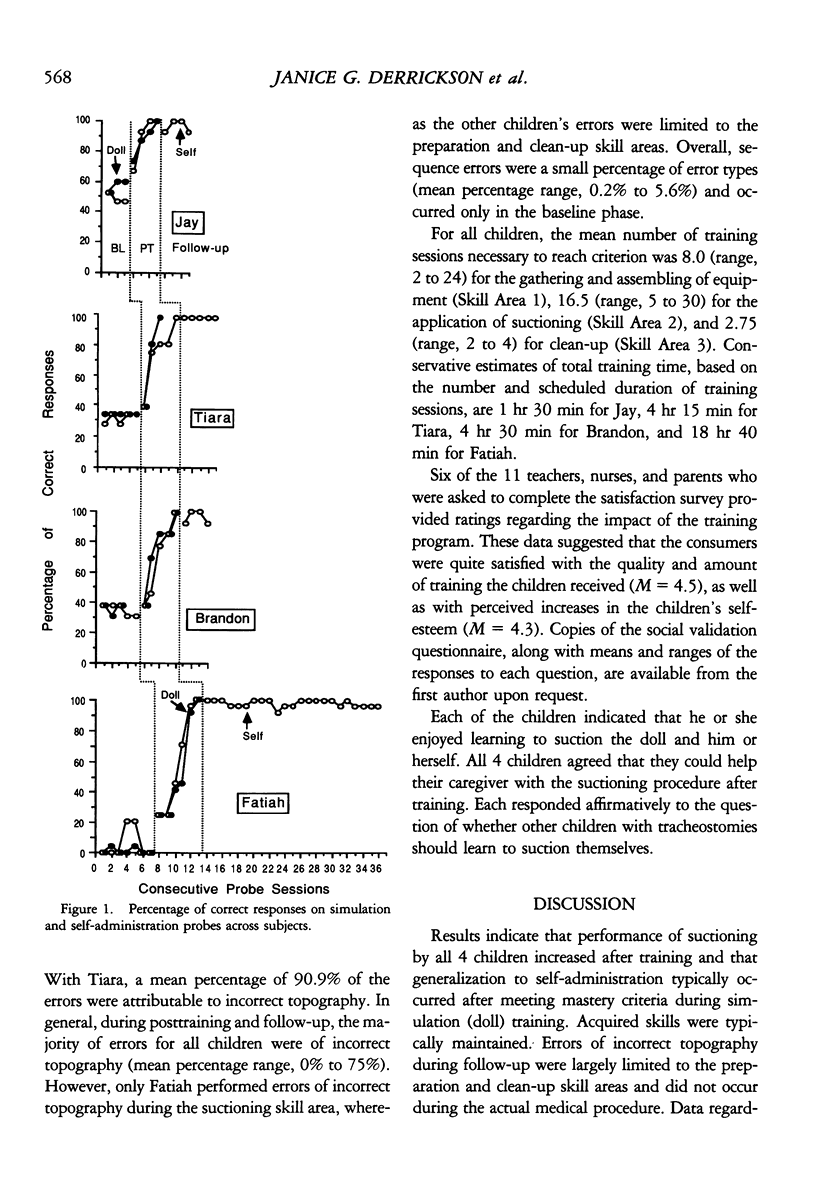
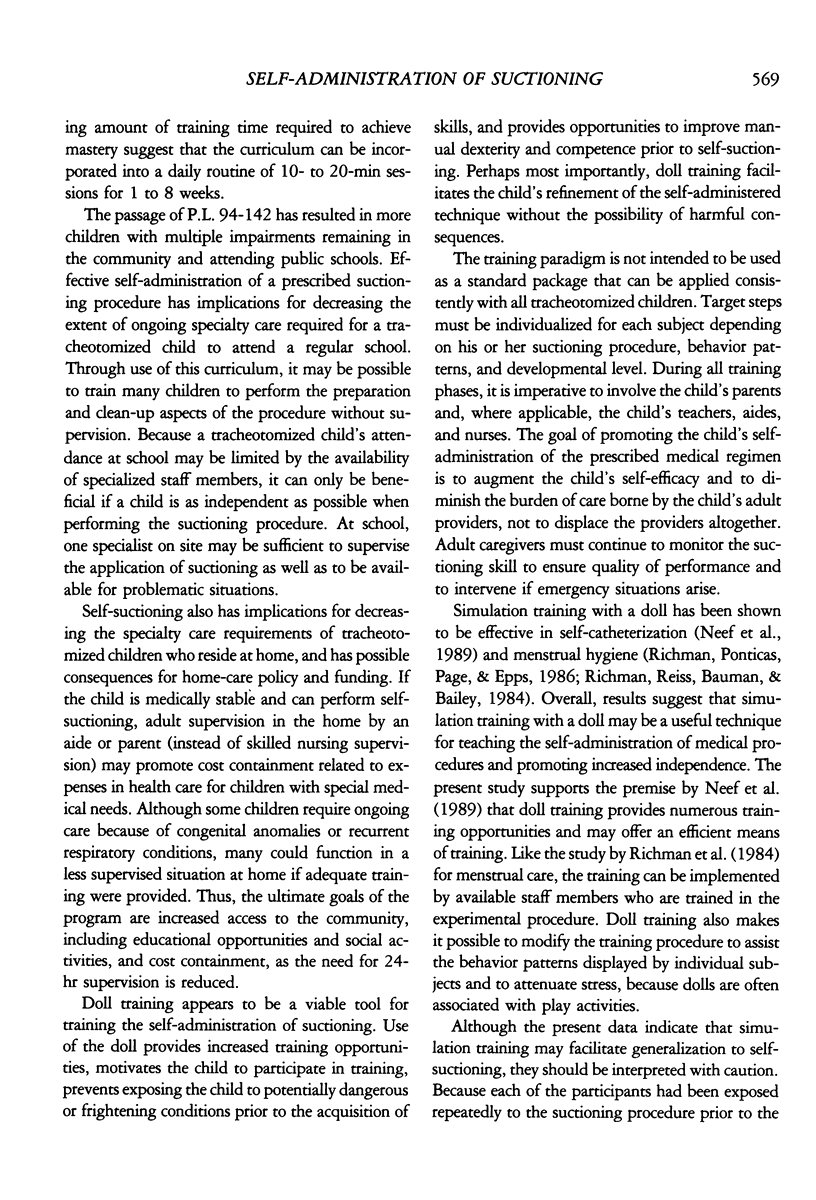
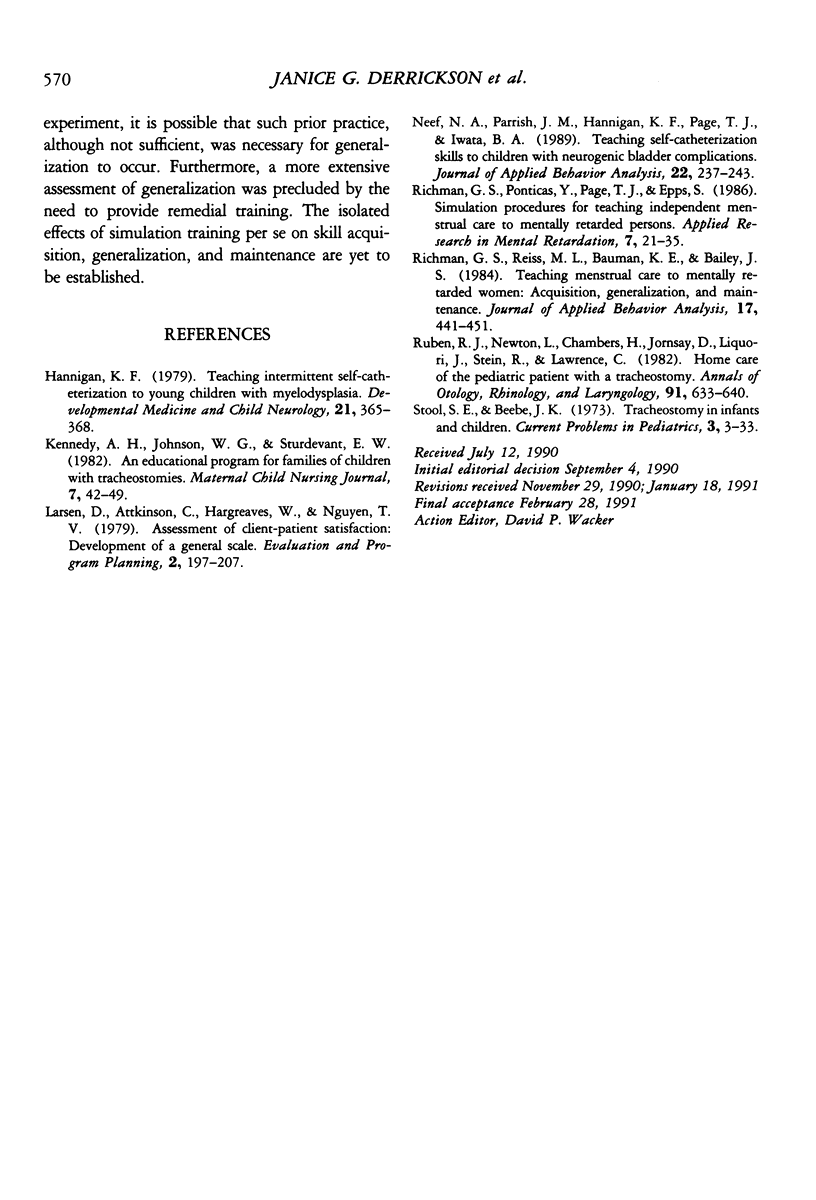
Selected References
These references are in PubMed. This may not be the complete list of references from this article.
- Hannigan K. F. Teaching intermittent self-catheterization to young children with myelodysplasia. Dev Med Child Neurol. 1979 Jun;21(3):365–368. doi: 10.1111/j.1469-8749.1979.tb01628.x. [DOI] [PubMed] [Google Scholar]
- Kennedy A. H., Johnson W. G., Sturdevant E. W. An educational program for families of children with tracheostomies. MCN Am J Matern Child Nurs. 1982 Jan-Feb;7(1):42–49. [PubMed] [Google Scholar]
- Larsen D. L., Attkisson C. C., Hargreaves W. A., Nguyen T. D. Assessment of client/patient satisfaction: development of a general scale. Eval Program Plann. 1979;2(3):197–207. doi: 10.1016/0149-7189(79)90094-6. [DOI] [PubMed] [Google Scholar]
- Neef N. A., Parrish J. M., Hannigan K. F., Page T. J., Iwata B. A. Teaching self-catheterization skills to children with neurogenic bladder complications. J Appl Behav Anal. 1989 Fall;22(3):237–243. doi: 10.1901/jaba.1989.22-237. [DOI] [PMC free article] [PubMed] [Google Scholar]
- Richman G. S., Ponticas Y., Page T. J., Epps S. Simulation procedures for teaching independent menstrual care to mentally retarded persons. Appl Res Ment Retard. 1986;7(1):21–35. doi: 10.1016/0270-3092(86)90015-9. [DOI] [PubMed] [Google Scholar]
- Richman G. S., Reiss M. L., Bauman K. E., Bailey J. S. Teaching menstrual care to mentally retarded women: acquisition, generalization, and maintenance. J Appl Behav Anal. 1984 Winter;17(4):441–451. doi: 10.1901/jaba.1984.17-441. [DOI] [PMC free article] [PubMed] [Google Scholar]
- Ruben R. J., Newton L., Jornsay D., Stein R., Chambers H., Liquori J., Lawrence C. Home care of the pediatric patient with a tracheotomy. Ann Otol Rhinol Laryngol. 1982 Nov-Dec;91(6 Pt 1):633–640. doi: 10.1177/000348948209100624. [DOI] [PubMed] [Google Scholar]
- Stool S. E., Beebe J. K. Tracheotomy in infants and children. Curr Probl Pediatr. 1973 Mar;3(5):3–33. doi: 10.1016/s0045-9380(73)80031-3. [DOI] [PubMed] [Google Scholar]


